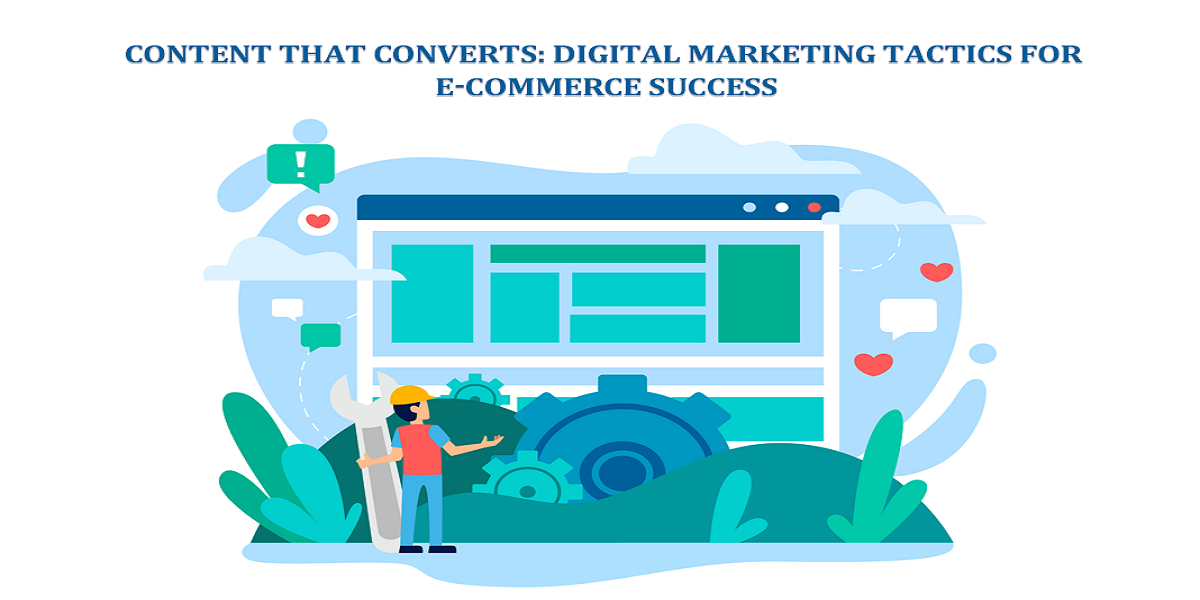
Mobile Optimization: The Key to Unlocking SEO Success
- By Yogita Meena
- 10-04-2023
- SEO
In today's digital age, having a mobile-friendly website is no longer optional; it's a must-have. With the majority of internet traffic coming from mobile devices, mobile optimization has become one of the most critical factors in search engine optimization (SEO) success. In this article, we will delve into the importance of mobile optimization for SEO and provide tips for optimizing your website for mobile users. From using responsive design to optimizing for website speed and local search, we'll cover everything you need to know to unlock the potential of mobile optimization and improve your search engine rankings, drive more traffic to your site, and increase sales and revenue.
The Growing Importance of Mobile Optimization for SEO
In 2015, Google announced that mobile friendliness would become a ranking factor in its search algorithm. Since then, mobile optimization has become a critical aspect of SEO. With the rise of mobile devices, search engines like Google have prioritized mobile friendliness as a ranking factor. In fact, in 2021, Google rolled out its mobile-first indexing policy, which means that it now uses the mobile version of a website as the primary version for indexing and ranking.
Having a mobile-friendly website not only improves your search engine rankings but also provides a better user experience for your visitors. A mobile-optimized site loads quickly, have easy-to-navigate menus and is optimized for different screen sizes. If your website is not mobile-friendly, users may leave your site quickly, resulting in a high bounce rate, which is a negative ranking factor for search engines. An E-commerce SEO agency can help you ensure that your website is optimized for mobile users, which can improve your search rankings, drive more traffic to your site, and increase sales and revenue.
Why Mobile-First Indexing Matters for SEO
Mobile-first indexing is an important concept for search engine optimization (SEO) because it affects how Google and other search engines index and rank your website. With the growing number of mobile users, Google has shifted its focus to mobile-first indexing, which means that it now primarily crawls and indexes the mobile version of your website before the desktop version. This is important for SEO because it impacts your website's visibility and rankings in search results.
Here are some reasons why mobile-first indexing matters for SEO:
- Mobile devices have become the primary way people access the internet. According to Statista, mobile devices accounted for over 50% of global website traffic in 2022. With the increasing number of mobile users, it's important to ensure that your website is optimized for mobile devices to reach a wider audience.
- If your website is not optimized for mobile devices, it can negatively impact your rankings in search results. Google's algorithm considers factors such as page speed, usability, and mobile responsiveness when ranking websites. If your website is not mobile-friendly, it may not rank as high in search results, leading to less traffic and fewer conversions.
- Google has explicitly stated that mobile optimization is a ranking factor. Google's mobile-friendly test tool can help you check whether your website is mobile-friendly and highlight any issues that need to be fixed.
- Mobile optimization can improve the user experience of your website. A mobile-friendly website is easier to navigate on a smaller screen, loads faster, and provides a better overall experience for mobile users. This can lead to more engagement, longer sessions, and increased conversions.
Tips for Optimizing Mobile Sites for Search Engines
1) Use a Responsive Design
It is a web design approach that allows websites to adjust to different screen sizes automatically. With a responsive design, your website will look great on any device, whether it's a desktop, tablet, or smartphone. Google recommends responsive design as the best way to make your site mobile friendly.
2) Optimize for Website Speed
It is a critical ranking factor for search engines. A slow-loading mobile site can negatively impact your search engine rankings and user experience. To improve your mobile site speed, optimize your images, minimize HTTP requests, and use a content delivery network (CDN).
- Images are often the biggest culprit when it comes to slow-loading websites. Therefore, it is essential to optimize your images to reduce their size without compromising quality. There are several ways to do this, such as using image compression tools, optimizing image file names, and reducing the number of images on your site.
- Minimizing HTTP requests is another way to speed up your site. HTTP requests are made when a user visits your site, and the browser requests various files such as images, CSS, and JavaScript. By reducing the number of HTTP requests, you can speed up your site significantly.
- Using a content delivery network (CDN) can also help speed up your site. A CDN is a network of servers located around the world that stores your website's content. When a user visits your site, the CDN serves the content from the server that is closest to them, reducing the time it takes for your site to load.
3) Create Mobile-Friendly Content
It means optimizing your content for mobile devices. Keep your paragraphs short and to the point, use headings and subheadings to break up content, and make sure your font size is easy to read on small screens. Short paragraphs and subheadings make it easier for users to scan your content quickly and find what they are looking for. Additionally, using a larger font size can make your content easier to read on small screens.
4) Improve Navigation
It is critical for a good user experience on a mobile device. Make sure your menus are easy to use and access. Use drop-down menus or hamburger menus to save space and make it easier for users to find what they're looking for. A good navigation system allows users to easily find what they are looking for, which reduces frustration and increases engagement. To optimize your website's navigation for mobile users, you should consider implementing a drop-down menu or a hamburger menu.
- Drop-down menus are a common navigation element on desktop websites, but they work well on mobile devices too. They allow users to quickly access different sections of your website without taking up too much screen real estate.
- Hamburger menus are another popular navigation element that is commonly used on mobile devices. They are named after the three horizontal lines that resemble a hamburger and are typically located in the upper left or right-hand corner of a mobile website. When the user taps the hamburger menu, it opens to reveal the website's main navigation links.
5) Use Mobile-Specific Keywords
As mobile searches are often different from desktop searches; it is important to use mobile-specific keywords to optimize your content for mobile devices. Mobile searches are often more location-specific, so using keywords like "near me," "open now," and "best restaurants" can help your website rank higher in mobile search results. By using these keywords, you can target customers who are more likely to be interested in your business and increase your chances of generating leads and sales.
6) Optimize for Local Search
It is another essential aspect of mobile optimization. Mobile devices are often used for local searches, such as finding a nearby store or restaurant. For optimizing your website for local search, you need to do Local SEO, which will help you rank higher in mobile search results and increase your visibility to potential customers. To optimize your website for local search, you should include your business information, including your address, phone number, and hours of operation. You can also use Google My Business to manage your local business information and increase your visibility on Google Maps and other Google search results.
7) Optimize Your Site's Metadata
Metadata is the information that appears in search results, such as your page title and meta description. To optimize your mobile site for search engines, make sure your metadata is descriptive, concise, and optimized for mobile users.
Your page title should accurately describe the content of the page and include your target keywords. Keep your title under 60 characters to ensure it displays properly on mobile devices. Your meta description should provide a brief summary of your page's content and encourage users to click through to your site. Keep your description under 155 characters to ensure it displays properly on mobile devices.
8) Use Accelerated Mobile Pages (AMP)
It is an open-source project that aims to improve the performance of mobile websites. AMP pages are designed to load quickly and provide a better user experience for mobile users. By using AMP, you can improve your mobile site's speed and provide a better user experience, which can lead to higher search engine rankings and increased traffic to your site.
To implement AMP, you'll need to create a separate version of your website that's designed specifically for mobile devices. You can use the AMP framework to create fast-loading pages that are optimized for mobile users.
9) Optimize Your Site's Navigation
Navigation is critical for a good user experience on a mobile device. To optimize your site's navigation for search engines, make sure your menus are easy to use and access. Use drop-down menus or hamburger menus to save space and make it easier for users to find what they're looking for.
You should also make sure your site's navigation is consistent across all pages. This will make it easier for users to navigate your site and find the information they're looking for.
10) Use Social Media to Drive Traffic to Your Site
Social media can be a powerful tool for driving traffic to your mobile site. By sharing your content on social media, you can reach a wider audience and increase your site's visibility. You can also use social media to engage with your audience and build relationships with your followers.
To maximize the impact of your social media efforts, make sure your content is optimized for mobile devices. Use short, attention-grabbing headlines and make sure your images are optimized for mobile users.
11) Use Mobile-First Design Principles
It involves designing your website with mobile devices in mind first, before considering desktop devices. By using mobile-first design principles, you can create a website that is optimized for mobile devices and provides a better user experience for mobile users. This can help improve your search engine rankings and drive more traffic to your site.
12) Test Your Site
It's important to test your site on different mobile devices and browsers to ensure that it looks and performs well on all devices. Google provides a Mobile-Friendly Test tool that you can use to test your site's mobile-friendliness. This tool will tell you if there are any issues with your site's mobile optimization and provide recommendations on how to fix them.
Optimizing your website for mobile devices is essential for improving your search engine rankings and providing a better user experience for your visitors. And by following these tips for optimizing mobile sites for search engines, you can improve your mobile site's search rankings and user experience. Remember, mobile optimization is not a one-time process, but an ongoing one. As technology continues to evolve, new devices, screen sizes, and user behaviors will emerge, making it essential for businesses to stay up-to-date with the latest trends and best practices for mobile optimization.
There are various tools available to help you test and optimize your mobile site, such as Google's Mobile-Friendly Test, which can analyze your site and provide recommendations for improving its mobile-friendliness. Other tools, such as GTmetrix, can help you identify areas for improving your site's speed and performance. Additionally, it's important to keep an eye on your mobile traffic and analytics to monitor your site's performance and identify any areas for improvement. This can help you understand how users are interacting with your mobile site, which pages or features are most popular, and where users are dropping off. Armed with this information, you can make data-driven decisions about how to improve your mobile site and optimize it for better search engine rankings and user experience.
Conclusion
In conclusion, mobile optimization is a critical component of SEO success in today's digital landscape. With the majority of internet users accessing the web via mobile devices, businesses must prioritize creating mobile-friendly websites that are optimized for search engines. Google's mobile-first indexing policy and the emphasis on website speed and user experience have made mobile optimization essential for ranking higher in search results. By implementing responsive design, optimizing for website speed, creating mobile-friendly content, improving navigation, using mobile-specific keywords, and optimizing for local search, businesses can unlock the potential of mobile optimization to drive more traffic, increase sales, and boost revenue. Therefore, it's crucial to invest in mobile optimization and outsource mobile optimization services from reputable agencies to stay competitive and improve your overall SEO performance.
Recent blog

How NASA Uses Web Design to Optimize User Experience in Space Control
Web Design | 03-05-2024
Content that Converts: Digital Marketing Tactics for E-Commerce Success
E-commerce | 02-05-2024.png)




